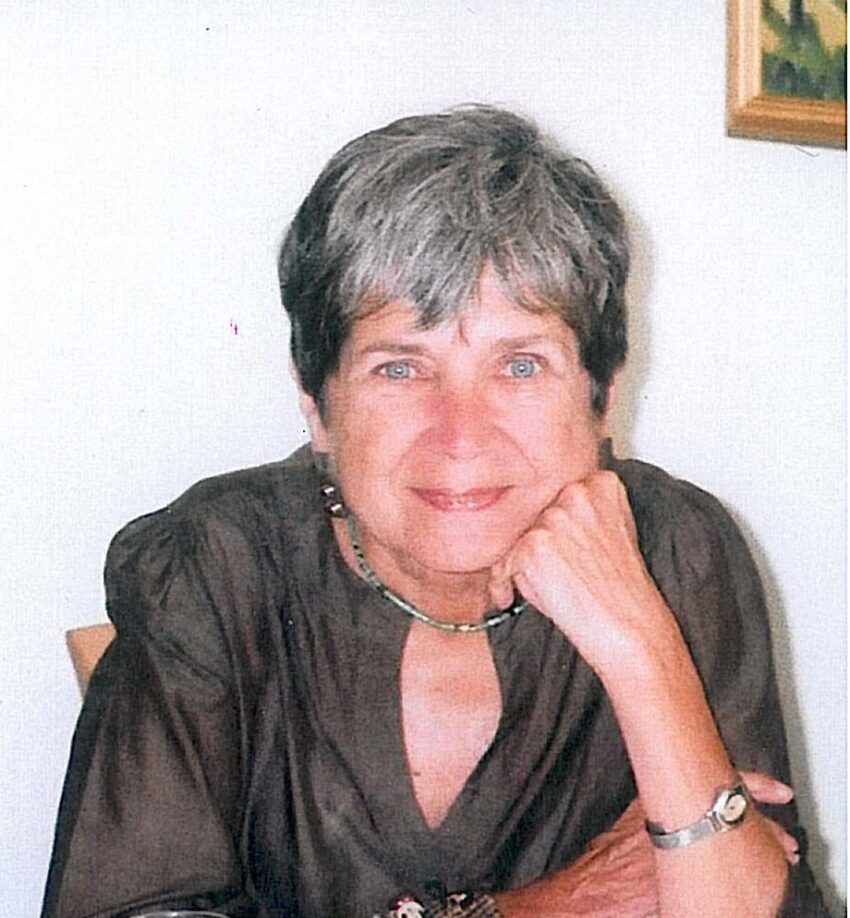The following is an article that appeared in the March 2022 issue of the CWEA Griffin.
Carolyn Toft, the Indomitable Force behind the Creation of Historic Districts in St. Louis
It is fortuitous for many neighborhoods in the City of St. Louis that long-time CWEnder Carolyn Toft’s academic pursuits veered in a new direction after she, her husband, and 4 children moved from Cleveland to Clayton in the early 70s. Dan, a history professor, had accepted a position at Washington University, where Carolyn decided to pursue a PhD in piano performance. She had earned a BA in Music from Grinnell College and a Masters in Music from the U. of Wisconsin, Madison. But after a few months, Toft switched to an Urban Affairs Master’s program, pursuing yet another interest, historic architecture, which was kindled when living in Europe years earlier.
Toft’s significant contribution to the establishment of historic districts in St. Louis can be traced to her coursework in the Urban Affairs department, which included multiple classes at the School of Architecture, and a 1973 internship at the City Plan Commission, headed by one of her professors, Norman Murdoch. By 1974 Toft had developed and taught a class of her own to incoming W. U. students titled, Urban Space & Form: Making Sense of St. Louis.
The Central West End was the largest neighborhood to receive an historic district designation, due largely to the efforts of 28th Ward Alderwoman Mary Stolar and Carolyn Toft. Stolar had been pestering Murdoch to establish an historic district in order to curb demolition and undesirable developments. Toft was sent, as part of her internship, to meet with Stolar at her Kingsbury Place residence.
“Together we developed goals to expand boundaries as far as possible beyond the private streets. Expanding north to include Olive Street proved unworkable because of a recalcitrant alderman. The legislation was finally complete after many public meetings and major assistance from CWE residents, especially Mary Bartley and architect Dave Davis, whose line drawings demonstrated terms better understood visually.” Toft’s advisor at W. U., Don Royse, wrote language to include “encouraging contemporary rather than faux historic infill.” (There is a misconception that contemporary architecture is not permitted in an historic district, however that is not the case.)
“Initially the legislation was blocked by the President of the Board of Aldermen, but (sharing a bit of City Hall intrigue) ‘someone knew his daughter.’ ” In 1974, the CWE became the city’s largest, local historic district and the subject of my thesis: ‘Politics and Preservation.’
By 1975, Toft was on the Landmarks Association Board, divorced, living in Skinker-DeBaliviere and working for John Roach as Preservation Planner at the Community Development Agency. She describes that time as an illuminating experience, as Roach and Lou Berra, in Mayor John Poelker’s office, gave her almost free reign to establish a “Board & Secure” program for vacant buildings, an opportunity to collaborate on TV ads for 4 historic neighborhood, including the CWE, and to prod the La Salle Park Urban Renewal project from what was planned as total demolition to rehab and adaptive reuse.
“But the looming Gateway Mall project forecast the end of a short unique period when preservation had real clout within city government,” Toft said. Seeing the handwriting on the wall, Toft left CDA in 1976 to become Landmarks Association’s first full-time staff person.
Toft is proud that during her 32-year tenure as Executive Director of the not-for-profit Landmarks Association, “its Mission Statement expanded to include ‘excellence in contemporary architecture and sound planning,’ which was critical. First, we accelerated a citywide survey of historic buildings producing neighborhood maps depicting the footprint of each building, construction date, and original architect or builder. These maps would become integral parts of multiple local and/or National Historic District documents…Survey maps also served as valuable planning tools or were useful artillery in conflict,” Toft added.
“Although the Central Business District (Downtown St. Louis) was the most prolonged battleground,” Toft said, “heartbreaking losses such as the Title Guaranty and Century Buildings should be weighted alongside photogenic victories from Union Station to the Arcade Building, Washington Avenue to the Fur Exchange.”
Toft continued: “Landmarks also sparked interest in legislation for a State Historic Preservation Tax Credit and helped assure its passage in 1997, produced a series of multi-lingual brochures combining architecture and public transit, collaborated on an innovative contemporary infill project on Bohemian Hill, and initiated a still-functioning educational program for children called What are Buildings Made of? Multiple publications were produced including St. Louis: Landmarks & Historic Districts authored by Toft and Lynn Josse in 2002, available on Landmarks Association’s website.
Property owners who live in any of 18 Historic Districts in the City of St. Louis may not be aware of the significance of that fact, until they want to replace drafty windows or modify a front porch. They may then be surprised to learn that any modifications to the exterior of their residence will have to be reviewed by the City’s Cultural Resources Office for compliance with each district’s design standards—each district has a unique character and its own set of rehabilitation and design standards.
The architecture of the CWE is one of its most compelling attractions, so it’s important to appreciate the importance of measures intended to protect and preserve that irreplaceable asset. The Central West End Association’s Planning & Development Committee reviews homeowners’ and developers’ plans and offers recommendations to Cultural Resources Office and to the City’s Preservation Board.
Other Districts include Laclede’s Landing, Benton Park, Old North St. Louis, The Hill, Lafayette Square, and the 4100-4300 Lindell Blvd. Ten of those districts are named Certified Historic Districts, and listed on the National Register of Historic Places.
While historic district standards may seem too stringent to some, without them our neighborhoods would not be as charming or as desirable a place to live and visit. For that we owe a deep debt of gratitude to Carolyn Toft, one of the most knowledgeable people on the subject in town, and one of the wittiest.
To view the entire March issue of the Griffin online, click here. The next issue of the quarterly will be published in early June.

